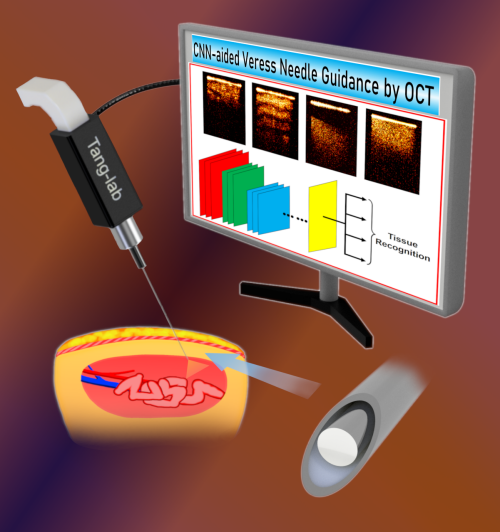Qinggong Tang, Ph.D., assistant professor, Stephenson School of Biomedical Engineering in the Gallogly College of Engineering at the University of Oklahoma, has received a prestigious CAREER award through the Faculty Early Career Development Program of the National Science Foundation. The five-year project will develop novel endoscopic optical imaging techniques to provide real-time visualizations to improve clinicians’ ability to successfully administer needle-based medical interventions.
Many health treatments require the delivery of medication through injection, called needle-based interventions. Some examples include the delivery of anesthesia, a tumor biopsy or a pregnant woman receiving an epidural during labor. Although quite common, needle-based interventions require absolute precision during administration. Currently, practitioners rely on X-ray or CT ultrasounds to provide guidance for needle placement, but these methods do not provide details about the depth of tissue, ligament, muscle or fat beneath the skin that can impact the efficacy of these interventions.
“With current methods, doctors can see the needle tip, but they cannot see the different tissue types. With an epidural, for example, there is not a precise way to ensure the needle reaches the epidural space, which is surrounded by blood vessels and can be dangerous if punctured,” Tang said. “By developing our novel imaging technology to guide this kind of procedure, we can improve the precision of needle placement.”



